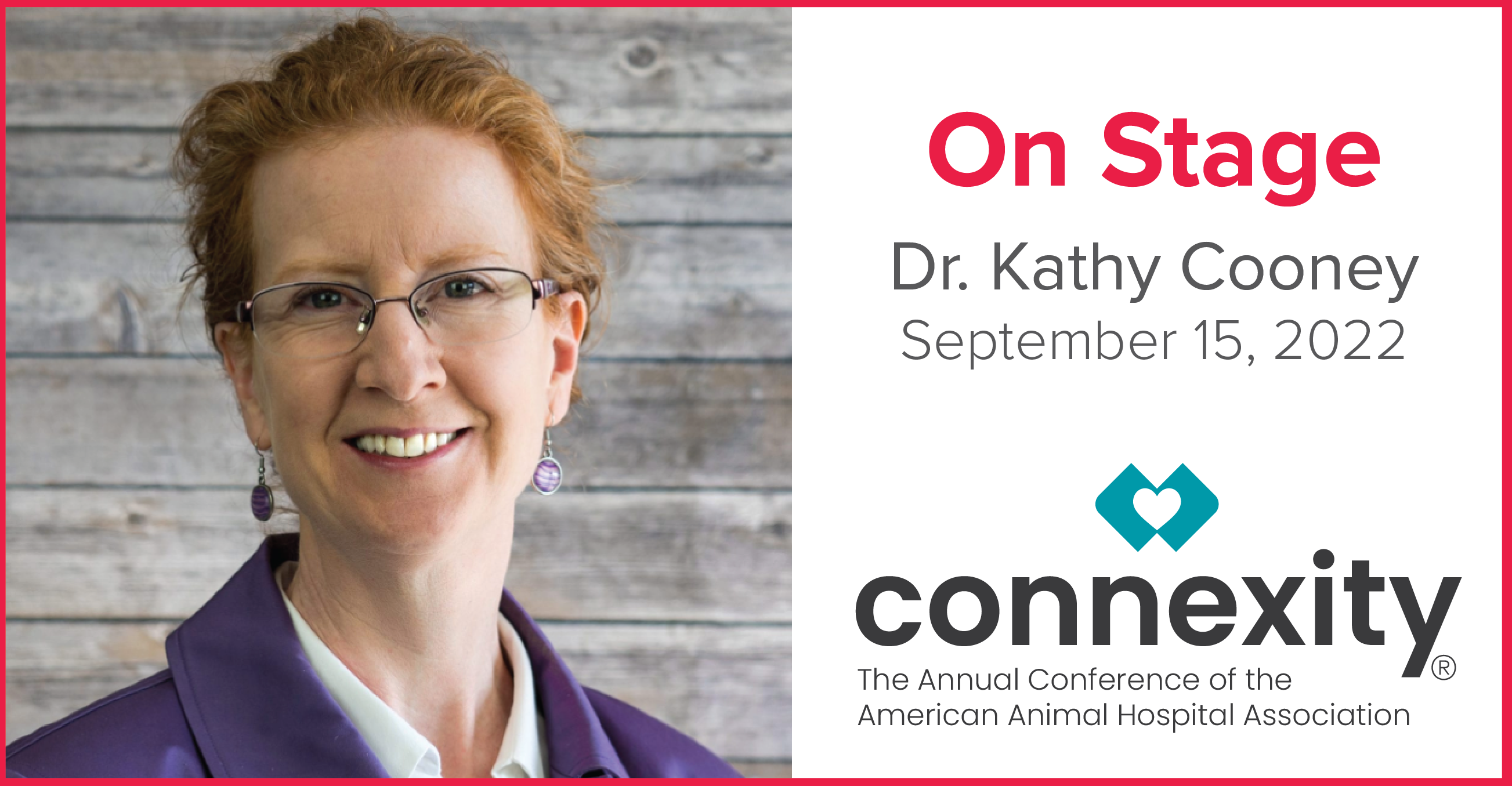How to Create a beautiful euthanasia experience

Anyone who has ever put a beloved pet to sleep might wonder if there’s such a thing as a “good” euthanasia.
Kathleen Cooney, DVM, MS, CHPV, a leading authority on companion animal euthanasia, says yes.
“A good euthanasia is one that holds beauty in the presence of extreme sadness and heartbreak,” Cooney told NEWStat. “It is transformative for all loved ones left behind.” And that includes caregivers most of all.
A past President of the International Association for Animal Hospice and Palliative Care (IAAHPC), Director of Education for the Companion Animal Euthanasia Training Academy (CAETA), and chair of the task force that created AAHA’s End-of-Life Accreditation Program, Cooney will present three workshops on various aspects of euthanasia at AAHA’s annual conference, Connexity, in September 2022.
Cooney believes that euthanasia is one of the most important procedures veterinary hospitals offer to their clients. And because companion animals hold a special place in the hearts of their caregivers, it’s imperative that everything go well, and that everyone present—including hospital staff—feels safe and supported.
But even under the best circumstances, attending a euthanasia can be challenging, not just for the client but also for the veterinarian and hospital staff involved. And according to Cooney, the experience itself has changed.
“Companion animal euthanasia has evolved past the confines of the injection itself,” she says. “It now comprises a delicate weaving and blending of emotional design elements that will provide the caregiver with love and support while giving the pet the beautiful death they deserve.”
And she said the profession’s attitude towards euthanasia has changed since she first started doing euthanasias in 2006: “Vet med knows the human-animal bond is growing, and that expectations around euthanasia are changing. Clients want more connection, more options.”
For Cooney, the experience of administering euthanasia, and tending to the emotional wellbeing of the people most affected by it, approaches art.
In fact, she refers to it as “the art of beautiful euthanasia experiences,” and it’s one she intends to teach through her workshops at Connexity.
NEWStat talked with Cooney about the upcoming workshops and what attendees can expect to get out of each one.
Session 1: Modern Memorialization Activity Hour—Creating Beauty in Times of Sadness
Clients treasure a variety of memorial items that honor their pets, and there’s no limit to what people can create to show love for the human-animal bond. In this workshop, Cooney will show you how to help your clients and team members make their own memorial items, from paw prints to decorated body transport bags.
“It’ll be the first of its kind,” Cooney said of the workshop, and called it a great way for attendees to share ideas with each other while doing arts and crafts.
Session 2: Emotionally Intelligent Euthanasia
“Emotionally Intelligent Euthanasia (EIE) builds the necessary ‘soft skills’—self-awareness, empathy, rapport, self-regulation—to enhance the experience for clients and build resiliency in the team,” Cooney said. “EIE is a game changer that can be applied to all areas of vet med—and it’s fun to master.”
Cooney said EIE is all about keeping your personal emotions in check to preserve your own mental wellbeing—so you can help clients better deal with theirs. “It’s important to understand what we’re feeling during euthanasia and what clients are experiencing. This knowledge guides our communication and makes end-of-life work more enjoyable and even fulfilling.” During this hour with Cooney, you’ll explore concepts like self-awareness and empathy to build a culture of EIE in your own practice.
Session 3: End-of-Life Communication Workshop
Cooney told NEWStat she’s most excited about leading this workshop: “The End-of-Life Communication Workshop has language to use in those sensitive conversations we all find ourselves in during euthanasia, hospice, and death care.”
Discussing end-of-life care isn’t easy for anyone unless they have the right tools and techniques. During this session, Cooney will teach you how to say the right thing during emotional times—making everyone feel better while improving trust between client and staff.
The number one thing hospitals should stop doing when performing euthanasias
If there’s one thing many veterinary hospitals still get wrong about euthanasia, said Cooney, it’s isolating the client from their pet during the appointment: “My magic wand would keep the client and pet together throughout the entire appointment; no more trips back to the treatment area for IV catheter placement.” Cooney said new research shows clients want every minute they can have with their pet. “And the pet benefits, too.”
The number one thing staff can do to improve their end-of-life communication skills
“Establishing stronger rapport from the start of the appointment,” Cooney said. “Better rapport increases trust, which strengthens the vet-client bond. It leads to relaxation, deeper connection, and understanding.”
Hear Kathleen Cooney talk about how to provide all aspects of a beautiful euthanasia experience this September in Nashville. Register for Connexity today.



